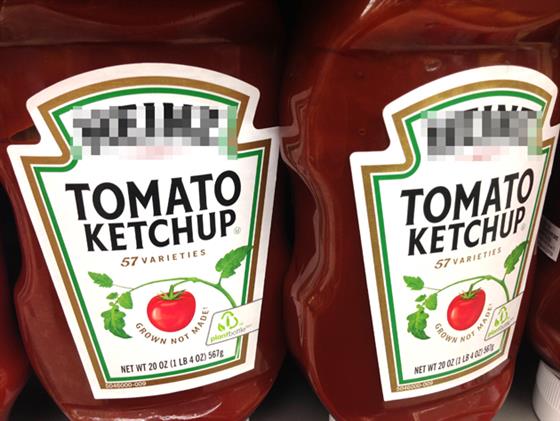
Original Ketchup is Chinese?
By Sheere Ng - Tuesday, Jan 15, 2013
Ever wondered why the term “tomato ketchup”? Aren’t all ketchups made of tomatoes, therefore it’s redundant to specify the ingredient?
About 300 years ago, ketchup was only a base sauce, and the condiment came in many flavours.
So what’s ketchup without tomato? Ketchup originally meant “fermented fish sauce” in the Hokkien/Southern Min Chinese sub-dialect of Zhangzhou. Evidence can be found in the Chinese-English Dictionary of the Vernacular or Spoken Language of Amoy, which states in 1873 that the terms koe-chap and ke-chiap refer to the “brine or salt of pickled fish”. (The word “Ke” is no longer used in modern Hokkien but “Chiap” still means “sauce”).

It happened more than 500 years ago when the Chinese seafarers from the province sailed along the South China Sea to trade at ports throughout Southeast Asia. When they traveled to Vietnam and Cambodia, the locals introduced them to the indigenous fish sauce, a pungent caramel colour liquid made of fermented anchovies and salt.1 The Chinese merchants, many of them speakers of Southern Min, called it kechiap in their language.
They then took kechiap with them to Indonesia, and the word was adopted by the Indonesians. Today, it is known as kecap, which means “sauce” in general.
In the 1600s, the Dutch East India Company and British East India Company came to Southeast Asia for spices, porcelain and textile. From Indonesia (where both companies established trading posts), they also brought with them kecap. This sauce travelled to Europe and America between 1600s to 1800s.
“I do not doubt but you London Gentlemen, do value it [chocolate] above your Anchoves,… your Soys, your Ketchups and Caveares [Caviars]” (Chamberlayne 1682, p.18)
In the early 18th century, the English began to add western ingredients to ketchup.2 “Mushroom-Ketchup” was first mentioned in 1728 (Bradley 1728, p.140), then “Oyster Ketchup” in 1787 (Charlotte Mason 1787, p.316) and finally “Tomato Ketchup” in 1800 (by James Morton). A “Tomato Catsup” recipe from 1817 stated anchovies as one of the ingredients, revealing its ancestry.
It was only in the 1890s that ketchups manufacturers like Heinz increased the sugar level for better preservation and added vinegar to replace the fermentation process.
Strangely, there were also early records referring soy sauce as ketchup.
“Soia of which Ketchup is made, is the Seed of an Indian Phaseolus” (Philosophical Transactions, 1808, p, 2266),
and
“[this] is surely the origin of Ketchup, another name for soy” (Schlegel and Cordier, 1894, Part III, p.140-43).
A possible explanation is that both soy sauce and fish sauce traced back to the same condiment in ancient china.
According to the book “Salt: A World History”, the Vietnamese adopted fish sauce from the Chinese soy sauce, “in those early times when the Chinese fermented fish with the beans.”
In the book Pharmacologia published in 1693 by Samuel Dale, a physician and geologist, it mentioned that the bean from which soy sauce, which he called “Soia’”, is made, is also used to make a condiment called Ketchup.
Hence, besides fermented fish, it is possible that kechiap was also made with soy beans, and when the condiment eventually developed into two different sauces (soy sauce and fish sauce), the term kechiap/ketchup was stuck with both.
This story of ketchup (or fish and soy sauce) is yet another reminder how interconnected our food cultures are.
1 There was an earlier record of fish sauce in China in 544 CE. But according to Chinese culinary historians, the popularity of fermented fish drastically declined in China while fermented soy bean products became more popular. By Qing Dynasty (17th century), soy sauce was the standard seasoning in China while fermented fish paste was only used in some regions.
2 Jane Austen’s family also had a walnut ketchup recipe which can be found in the household book kept by her best friend Martha Lloyd while she lived with her.


